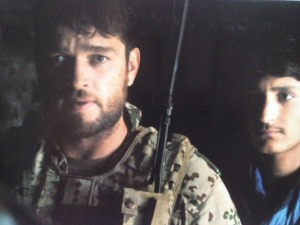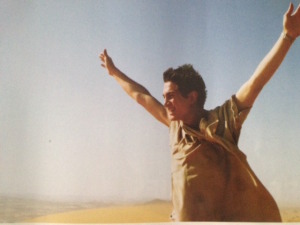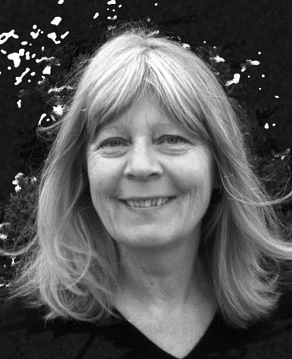For the first time I was not familiar with any of the films in the program of Berlin & Beyond 2015 even though I saw films while in Germany and at least one, DAS LABYRINTH DES SCHWEIGENS would have fitted well into this year’s theme of truth. The films I picked took me from Afghanistan to Mexico City with stops in Marrakesh, Austria, Switzerland and Berlin – in six films around the world. Where else can you travel so fast so far getting deep insights into foreign countries, only at film festivals, and if it’s at the Castro Theatre it feels like traveling business class. Things can go wrong though, also in business class. DIESES SCHÖNE SCHEISSLEBEN/THIS LOVELY SHITTY WORLD started 45 minutes late because of technical problems but filmmaker Doris Doerrie proofed that zen practice has worked for her. She stayed calm and collected and in the end answered lots of questions from the audience responding, as always, lively and engaging. The documentary is about women mariachi players in Mexico City, old ones who peaked thirty years ago and young ones who leave their family every night to play at Plaza Garibaldi (named after the Italian hero’s grandson who came to Mexico from Australia to fight in the revolution of 1910-20). At Plaza Garibaldi you can find mariachi players 24/7 for hire for your wedding or dia de los muertos, or just to enjoy the music. Tourists are sparse at the plaza, said Doerrie, it is not a safe place. But thanks to her courage and curiosity we have this beautiful film about women who discovered that they can sing and play and then never left the plaza despite kids and family, religion and tradition. Doris Doerrie recorded their stories and their beautiful voices not trained in mariachi schools, she said, there are schools in Japan and in the US but not in Mexico. I would have liked to hear and see more about Plaza Garibaldi and the history of mariachi. One of the film’s areal views of Mexico city could have zoomed in on that plaza with a few more comments about its uniqueness compared, for instance, to Mexico City’s zocalo. But I will be there next week and check it out.
AMOUR FOU, a film by Jessica Hausner about Heinrich von Kleist’s suicide ends like LOVELY RITA (2001), an early film of hers I remember vividly, with gun shots. Rita shot her parents, Heinrich von Kleist shot his soul mate Henriette Vogel and then himself. It was well planned in Kleist’s case. An outsider on Germany’s literary scene he had been thinking about suicide for half of his life (he died at age 34), especially during the last years, (1810-11) after being rejected by publishers and public. Finding a way out through suicide, not by himself but with a companion, is the focus of this film. Henriette, a married woman, mother of a young girl and diagnosed with a growing tumor in her belly, was a good candidate to accompany him. Ending her life together with Kleist became more feasible than doing it by herself, and eventually gave in to his lures of love and death. Was is love that drove Kleist to do it? Not love for a specific woman, he had asked somebody else to die with him who had declined. He needed a companion not a lover. He wanted to leave the world that had no place for him but could not do it by himself. Was he weak, a coward who loved himself more than any of the women he asked to die with him? Well researched with authentic quotes, costumes and settings, I wonder though why Hausner altered history slightly at the end of the film. Henriette’s autopsy confirmed cancer of the uterus, in the film, however, the doctor reported that no tumor was found, suggesting that her problems were mental. Hausner’s reductionist approach to complex problems is what made this and all of her films fascinating. I came home and wanted to read Kleist again and everything I could find about his life. And what about Henriette Vogel? There is not much besides what is said in the film. She was married had a several babies that died very young, one daughter survived. She liked to sing. But the letter she wrote to her husband the day before she died (together with Kleist’s farewell letter, both not mentioned in the film) now belongs to Germany’s canon of romantic literature.
In EXIT MARRAKECH, by Oscar veteran filmmaker Caroline Link (BEYOND SILENCE , 1996, NOWHERE IN AFRICA 2001) we accompany 17 year old Ben to the less touristic parts of Marocco. A gifted child of divorced, successful artists, Ben came to Marokko to mend fences with his father whom he has not seen in a while. Bored with school and life the advice of the school’s headmaster for his pet student is to do something exciting, get involved. And that’s what Ben does. He falls in love with a native and thereby discovers a culture that is so foreign to his sheltered, privileged life in Germany that he lets himself fall deeper and deeper into it until his father rescues him. In the end father and son overcome their problems, Ben’s diabetes is under control again and most important of all, he experienced what was missing in his teenage life. He stepped into adulthood. Beautiful photography of Marocco where it was shot, of the desert, the people, the family life on the country side. All seemed very authentic, impressive acting by Ben (Samuel Schneider) and his father, starring Ulrich Tukur, one of Germany’s best. The story about finding excitement and passion by going native in an exotic country has been told many times. Always great to watch but I had expected something less predictable from Oscar winner Caroline Link.
Friday night’s film IN BETWEEN WORLDS / Zwischen Welten was dedicated to Ronald Zehrfeld, starring in the leading role and honored for his work with the Spotlight Award in Acting. (Lots of awards were given this year with lots of speeches). War films have been rampant in the US, even directed by women. Katherine Bigelow’s Oscar winner, THE HURT LOCKER is one of the few I have dared to see. Feo Aladag the director of IN BETWEEN WORLDS (also of DIE FREMDE, her previous award- winning film) has a different approach. Her protagonist, Jesper, is not a shameless killer, he is reluctant to even kill a cow. His compassion for the wrong side and hesitation to make decisions gets him into trouble that eventually will end his career as a soldier. Why did he come to Afghanistan in the first place, I wondered throughout the film. He was not made for being a commander of his troupes that was to protect a village against the enemy. His supervisor asked him the same question at the beginning of the film and all we hear from Jesper is that his brother was killed in Afghanistan. He could have opted out but decided to go back for a second time. We never find out why. And did he really have to be the one driving the pick-up truck to the hospital, leaving his command post to save the life of the interpreter’s sister? Couldn’t he have sent one of his soldiers to drive the truck? I don’t know much about the rules and would have liked to ask these questioned during the Q/A that followed the screening, but the audience never got to ask questions. It was a talk in the dark, host and actor sitting on stage of the Castro where the lights could not reach them exchanging long statements about Germany’s involvement in that war and the authenticity of the film which was shot on location in Afghanistan. It felt authentic, yes, and for Ronald Zehrfeld shooting in the war zone was a deep, memorable experience, he said. His questions about the war were answered, not mine.





